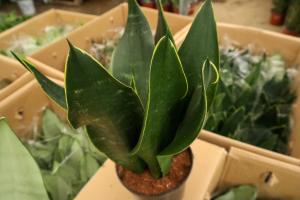Introduction:
Spider plants, also known as Chlorophytum comosum, are one of the most popular indoor plants due to their attractive appearance and ease of care. While they can thrive under various lighting conditions, proper watering is critical to ensure their survival. So, how often should you water your spider plants?
Factors Affecting Watering Frequency:
Several factors affect the frequency of watering spider plants. These include the plant's size, the type of pot it is in, and the surrounding humidity levels. Larger spider plants typically require more frequent watering than smaller ones, while plants grown in porous pots or those exposed to high humidity levels may need less water.
Watering Frequency:
The general rule of thumb when it comes to watering spider plants is to wait until the top inch of the soil is dry before watering again. This can take anywhere from 7-10 days, depending on the surrounding environment. Overwatering spider plants can cause root rot and leaf yellowing, while under-watering can lead to leaf browning and drying.
Watering Techniques:
When watering spider plants, it is essential to avoid pouring water directly onto the foliage. Instead, water the soil directly to ensure that the roots receive sufficient moisture. Excess water should be drained away from the pot to prevent standing water that can lead to root rot.
Signs of Overwatering and Under-watering:
It is crucial to watch out for signs of overwatering and under-watering to adjust your watering frequency accordingly. Signs of overwatering include yellowing leaves, mushy stems, and a foul smell emanating from the soil. On the other hand, signs of under-watering include dried and crispy leaves, slow growth, and curled foliage.
Different Seasons:
In winter, spider plants require less frequent watering due to a more dormant growth cycle. In contrast, during summer, they need more water to compensate for the increased temperature and humidity levels. Therefore, adjust your watering frequency during different seasons to maintain the plant's health and vitality.
Conclusion:
Proper watering is critical to maintaining the health and appearance of your spider plant. Wait until the top inch of soil is dry before watering and avoid overwatering to prevent root rot. Monitor the plant for signs of under-watering and overwatering and adjust your watering frequency accordingly. With proper care, your spider plant will thrive and bring joy to your home or office space!

 how many times do yo...
how many times do yo... how many planted tre...
how many planted tre... how many pine trees ...
how many pine trees ... how many pecan trees...
how many pecan trees... how many plants comp...
how many plants comp... how many plants can ...
how many plants can ... how many plants and ...
how many plants and ... how many pepper plan...
how many pepper plan...































